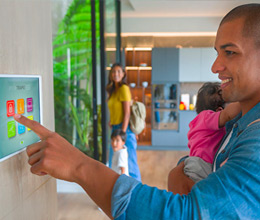Please rotate your device
Landscape mode is not supported. Please return to portrait mode for a better experience.
(Or, better yet, download our app from the APP Store!)
I hereby consent to ADI storing my credit/debit card information in an encrypted form, and expressly consent for ADI to process and charge my credit/debit card for authorized transactions. I understand that authorized transactions may include applicable shipping, taxes and other handling charges as specified on an invoice. In the event the credit/debit card provided becomes invalid, I agree to provide a new valid credit card upon request, to be charged for the balance of any payments owed. This authorization will remain in effect until ADI is notified by me to cancel this authorization.
I further understand and agree to abide by ADI's credit card policy as it relates to term payments and other purchases made with my credit/debit card on file. Any future changes made to this agreement will be communicated by ADI via email.


A smart home security system is ready to arm and protect your customer's home, apartment or property from outside threats with the help of several connected network devices. Some of these devices include intrusion alarms, garage door openers, smart security cameras, video doorbells and much more. A security system also gives your customers around-the-clock protection with the help of professional installation. That way if they miss an intrusion alert, the installed security features can alert the authorities. Here are a few steps you need to check off your list before you install a home security system for your customers:
Before you start purchasing your low-voltage equipment, you should check what type of residence it is. Is it a house or an apartment? Ideally, apartments require fewer smart gadgets to install due to being a smaller area. A large home will require much more equipment versus a small apartment, which uses less space. That is why it is imperative to know which type of security solutions you will need to properly install your next home security system.
Knowing your customer's security equipment needs for their home (How big is the home? What security equipment will they need and for what? How old is the property?) can make the installation process easier to manage. Low-voltage security equipment acts as the bridge for communicating to the base station in the home, meaning that the connected devices are able to send signals to alert the customer of a possible security breach. There are a wide variety of categories that these security sensors fall into, including fire, networking, access control and intrusion. Here are some of the basic types of low-voltage equipment that should come with a home security installation:
There are many ways to manage a home security system. Your customers can choose from keypads, control panels, voice control or a mobile app to manage their home security system with ease. These management systems or base stations are programmed to alert, disarm and display security footage at the homeowner's discretion. In addition, these security options serve to connect wirelessly to each smart home device and the internet.
Managing a home using a voice-activated system is an increasingly popular feature. A voice assistant (such as Google Assistant and Amazon Alexa) can turn lights on and off, disarm a motion sensor and more by just using the homeowner's voice.
Control panels and keypads are common control systems used in most homes that help arm and disarm equipment, such as door locks, alarm systems and other smart home controls.
Mobile security apps are perfect for keeping an eye on the home or apartment when the homeowner is away, all from the touch of their mobile device. Homeowners can easily access security cameras, alarms and other smart home devices whenever it is convenient for them.
We know that a reliable network connection is essential for home security equipment. But which network connection is the best choice for your customer? You can choose from landline, broadband or cellular.
A landline is a wired network that requires a telephone and radio frequency that is professionally installed in the home. A landline is traditionally cheaper than a wireless connection and it is more reliable when an internet connection is not available.
Broadband is a wireless option that more and more homeowners are using. If a homeowner has high-speed internet, a broadband connection is the right choice. Even with this choice, customers should have backup batteries in case the internet connection is lost.
A cellular or Wi-Fi network is used to communicate easily via a smartphone app that can control the devices. This method will require a chip to be installed in order to notify the security system.
A home security system offers protection for your customer's family and home. Knowing the different options and features will help you guide your customers to make the right decision for them. And, by becoming an expert in these technologies, you can offer 24/7 professional monitoring that will keep your RMR increasing and keep your customers safe whenever they need it.


